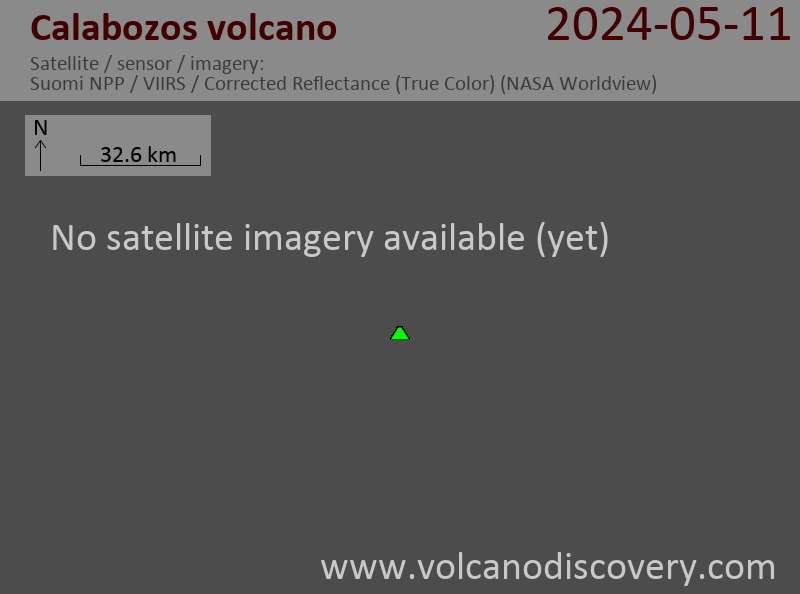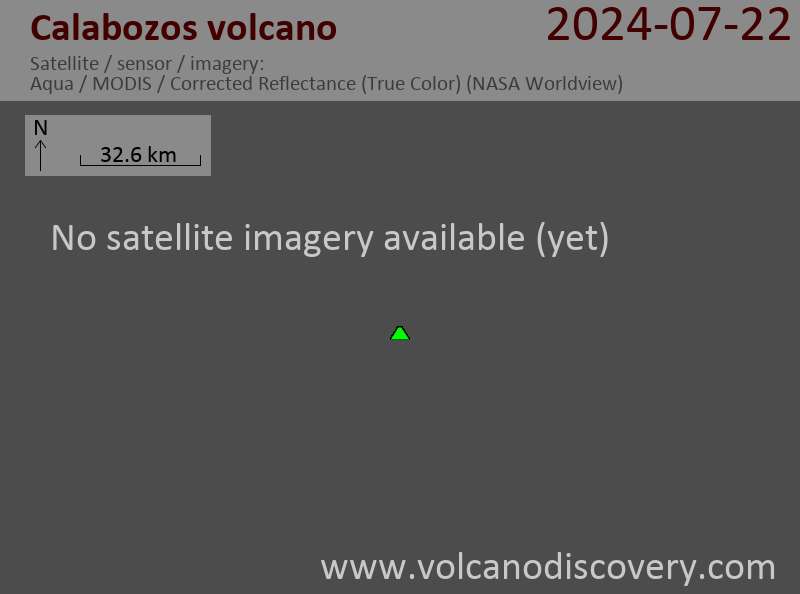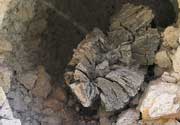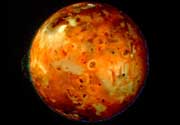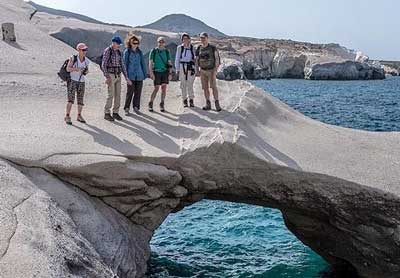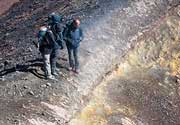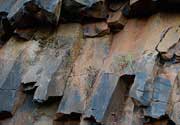Calabozos Volcano
Updated: Apr 29, 2024 17:55 GMT -
caldera 3508 m / 11,509 ft
Central Chile and Argentina (South America), -35.56°S / -70.5°W
Current status: normal or dormant (1 out of 5)
Central Chile and Argentina (South America), -35.56°S / -70.5°W
Current status: normal or dormant (1 out of 5)
Calabozos volcano in central Chile is a complex containing a large 26x14 km wide caldera, Cerro del Medio volcano at the south of the caldera, and 4 cinder cones of Descabezado Chico on the western caldera rim.
The caldera was formed by repeated massive (super-volcano) eruptions 800,000, 300,000 and 150,000 years ago, each of which deposited hundreds of cubic kilometer of ash flows.
[smaller] [larger]
Calabozos volcano eruptions: unknown, but less than 10,000 years ago
Latest nearby earthquakes
| Time | Mag. / Depth | Distance / Location | |||
Background
The 26 x 14 km composite late-Pleistocene Calabozos caldera produced major rhyodacitic-to-dacitic ashflow sheets of ~200-500 cu km magma each, collectively referred to as the Loma Seca Tuff, at 0.8, 0.3, and 0.15 million years ago. Eruptive activity has continued into the Holocene, forming the 20-25 cu km dacitic-to-andesitic Cerro del Medio complex at the southern end of the caldera and the four clustered vents of Descabezado Chico near the western caldera rim.The late-Holocene 2.5 cu km Escorias dacitic lava flow from Descabezado Chico traveled >30 km to the south. Several hot-spring clusters are present along the margin of the central resurgent uplift within the caldera.
---
Source: GVP Calabozos volcano information





